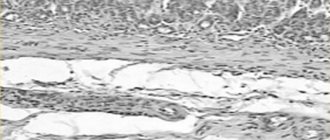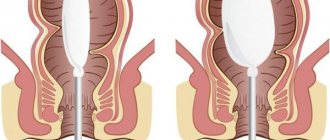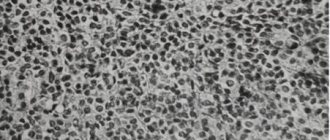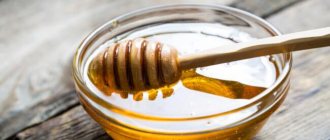Almost every one of us, at least once in our lives, has felt a painful and excruciating burning sensation behind the sternum, which intensifies with changes in body position. This is heartburn, but it is important to immediately emphasize that this is not an independent disease, but only a pathological symptom of various digestive problems, changes in the anatomy of the abdominal cavity or metabolic disorders
Most often, heartburn occurs as a result of the so-called GER - gastroesophageal reflux or, more simply, the backflow of food masses and hydrochloric acid from the stomach into the lumen of the esophagus. This is possible both in healthy people, if you overeat and immediately lay down on the sofa, and in patients with various digestive and other diseases.
It is important to understand that heartburn is a kind of signal to the body: “something is wrong with the stomach,” so you need to alleviate the condition when this unpleasant symptom develops, and at the same time look for the cause and treat it under the guidance of a gastroenterologist. It is he who should select for you heartburn pills that will be most suitable in each specific situation.
Today there are many different medications against heartburn, which have different release forms. These are suspensions in bottles and individual sachets, chewable tablets or capsules that must be swallowed whole. Choosing the best pills for heartburn is not easy; it is important to look at the composition of the drug and the principle of action, as well as take into account the cause of heartburn, age and many other criteria.
Rating of the top 10 inexpensive and effective tablets for heartburn according to KP
Considering the fact that antisecretory drugs have a number of contraindications, and they are not so active against heartburn that has already occurred, we will dwell in detail on antacids, which eliminate burning and pain the fastest, and we will analyze the most popular and recommended by experts.
Maalox
Maalox.
Photo: Pharmatis In addition to chewable tablets with fruit flavor (including sugar-free for diabetics), it is available in the form of bottles or individual sachets of suspension. Available without a prescription - it has a complex composition with two active ingredients - algeldrate and magnesium hydroxide.
Effectively eliminates heartburn almost immediately upon administration, having a neutralizing effect against excess hydrochloric acid. In addition, the drug helps to inhibit the re-production of hydrochloric acid by the stomach and exhibits an adsorbing effect. The drug works only locally, without being absorbed into the blood plasma.
Used for heartburn that occurs:
- as a symptom of GERD, gastritis and peptic ulcer;
- against the background of poor nutrition, overeating, consumption of sour, spicy, irritating foods;
- as a side effect when treated with certain medications (for example, hormones);
- during pregnancy.
It is acceptable to take it during the day or at night, strictly according to the instructions.
It is prohibited for use in children under 15 years of age; it should not be taken by people with an allergy to fructose or with kidney damage.
show more
Gaviscon
Gaviscon.
Photo: Reckitt Benckiser Healthcare (UK) Limited In addition to chewable flavored tablets, dual-action tablets, it comes in the form of a suspension, including in individual dosed sachets. Dispensed from pharmacies without a prescription, it has a combined composition of three active ingredients - calcium carbonate, sodium alginate with sodium bicarbonate.
When it enters the stomach and binds with hydrochloric acid, it forms a neutral gel that suppresses irritation of the mucous membrane and covers it with a thin enveloping film. Prevents contents from being thrown from the stomach into the esophagus. Heartburn begins to go away within 5 - 6 minutes after taking the dose, but the tablets act somewhat slower than the suspension. On average, the effect lasts up to 4 - 5 hours.
The drug is used:
- with the development of GERD with frequent heartburn;
- during pregnancy in any trimester;
- against the background of overeating and eating irritating foods.
The tablet must be chewed thoroughly before swallowing; more than 4 doses should not be taken per day.
When taken frequently, especially in pregnant women, it can sometimes cause constipation. It is prohibited for use in children, people on a salt-free diet, those with kidney problems or phenylketonuria.
show more
Acute pancreatitis (AP) is one of the most common and severe urgent diseases, accounting for 5-13% of all surgical diseases, but until now there is no common understanding of the etiology and pathogenesis of AP, which determines different approaches to its treatment. In the case of damage to the retroperitoneal tissue, the process tends to spread rapidly due to the lack of tissue barriers and the harmful effects of enzymes on the tissue. Mortality rates and purulent complications in AP still remain high, which requires timely implementation of a set of conservative measures and, if indicated, surgical interventions [2, 4, 5, 7, 15]. At the same time, in the structure of mortality, the share of purulent complications accounts for from 40 to 80%. To prevent such complications, adequate treatment of the disease in the phase of enzyme toxemia and the intermediate phase of AP is necessary [1, 4, 5, 7, 12, 15, 24].
The main components of conservative treatment aimed at preventing the development of purulent-necrotic complications are antibacterial therapy and suppression of pancreatic (P) secretion [5, 12, 22]. In contrast to issues of antibacterial therapy, there are disagreements in issues related to antisecretory therapy [1, 10, 20]. A special role is given to antisecretory therapy in the early phases of O.P. All researchers recognize the stimulating effect of water and food intake by mouth on pancreatic secretion and the inadmissibility of oral nutrition in the early phases of the disease [9, 10, 12, 30, 33].
Among the non-drug methods of suppressing pancreatic secretion, there are therapeutic fasting, nasogastric drainage and aspiration of gastric contents [5, 20, 24], hypothermia of the pancreas [10] and intestinal lavage, the antisecretory effect of which is due to a decrease in the release of gastrointestinal peptides that stimulate the exocrine function of the pancreas, which allows eliminating the phenomenon of dynamic intestinal obstruction in the shortest possible time, thereby helping to reduce the frequency of purulent complications and overall mortality [5, 13, 14, 22].
Intraduodenal administration of proteolytic enzymes has been proposed to reverse inhibition of pancreatic secretion, but the isolated nature of such studies prevents the widespread use of the method [14]. Anticholinergics for AP (atropine, platiphylline, scopolamine) help to reduce the secretory activity of the pancreas, but their use does not lead to a significant improvement in the course of AP, therefore, taking into account the side effects, this group of drugs has practically not been used recently. A number of researchers propose the use of selective H2 receptor blockers [14, 20], such as cimetidine, ranitidine, quamatel (famotidine), and roxatidine. The mechanism of their action is based on blocking the H2 receptors of the parietal cells of the gastric mucosa and, for this reason, reducing the production and flow of hydrochloric acid into the lumen of the stomach. However, some authors are skeptical about the use of these drugs in AP.
There is evidence of the beneficial effect of protease inhibitors on the course of AP in the early phases, in different doses and with different routes of administration (intravenous, intra-aortic, intraperitoneal, combined, selectively into the celiac and common hepatic artery) [10, 23]. The following protease inhibitors are quite widely used in clinical practice: contrical, trasylol, gordox, pantrypin, tsalol. A common property of inhibitors (antienzyme drugs) is the ability to block the activity of proteolytic enzymes by forming stable inactive complexes with them. To date, more than 2000 works have been published on the use of antienzyme drugs for the treatment of AP both in the clinic and in experiments, but there is no consensus on the pathogenetic validity of their use, effectiveness, doses, and routes of administration. Many surgeons consider the use of inhibitors ineffective, citing the fact that antienzyme drugs, even in large doses, do not interrupt the necrotic process in the gland and peripancreatic tissue. In the edematous form of pancreatitis, the use of Trasylol and other antienzyme drugs is not justified from both a clinical and economic point of view. However, it is not recommended to completely abandon the use of protease inhibitors [8, 20].
Progress has been made in the treatment of AP with cytostatics and pancreatic ribonuclease, which, by blocking cellular transcription and translation, inhibit enzyme production by acinocytes of P.Zh. Some authors recommend 5-fluorouracil [10], others - cyclophosphamide. The toxicity of cytostatics, suppression of the immune system, erythro- and leukopoiesis limit their use. To reduce side effects and increase the concentration of drugs in the pancreatic tissue, they propose their selective administration into the celiac trunk and pancreatic duct. Ribonuclease allows you to very quickly relieve pain, helps to remove patients from toxic shock, blocking the pathological release of enzymes into the blood, but has no advantages over cytostatics [19, 22].
To suppress pancreatic secretion, a number of authors suggest using the neuropeptide drug dalargin, which helps suppress the secretion of digestive juice and accelerate the healing of ulcerative lesions of the gastrointestinal tract, reduces the activity of lipolysis and proteolysis enzymes, basal and stimulated pancreatic secretion and the therapeutic effect of which is associated with the effect on endocrine cells — targets in the pancreas [8, 16]. Currently, this drug is not used in clinical practice. Surgeons pay close attention to somatostatin and its synthetic analogues, in particular octreotide, which can improve the results of treatment of AP, increase the effectiveness of conservative treatment of pancreatic fistulas, they can also be used to prevent purulent complications [4, 32]. It is known that somatostatin stimulates the formation of c-AMP, which plays a major role in the process of hormone secretion. Somatostatin prevents the process of calcium penetration into secretory cells, which was demonstrated in an experiment on an isolated group of cells from P.Zh. Infusion of somatostatin peptides into humans leads to inhibition of the secretion of somatotropin, thyroid-stimulating hormone, insulin, glucagon, digestive tract hormones (gastrin, vasoactive intestinal peptide, cholecystokinin), decreased secretion of hydrochloric acid, pancreatic enzymes, decreased absorption of fats and amino acids [13, 25]. The effects of somatostatin are realized through its interaction with somatostatin receptors (SSTR) [6, 17, 18].
The somatostatin analogue octreotide is an inhibitor of endocrine and exocrine pancreatic secretion, a modulator of intestinal motility, absorption of electrolytes and nutrients, gastric and pancreatic secretion, and reduces arterial blood supply to visceral organs and portal blood flow. Octreotide significantly reduces the main mesenteric blood flow due to a direct effect on the smooth muscle of the mesenteric vessels [28, 29]. Unlike the natural hormone, which is quickly destroyed by endopeptidases and has a half-life of only 2-6 minutes, the half-life of octreotide reaches 90 minutes. Synthetic analogs of the hormone, including octreotide, have a high affinity for SSTR2 and SSTR5 and have almost no effect on the SSTR1 and SSTR4 subtypes of somatostatin receptors. The activity of octreotide in relation to SSTR2 receptors is 3-10 times higher than that of the natural hormone [6, 17, 18, 31]. The drug is used at a dose of 100-300 mg subcutaneously 3-4 times a day for 5 days, depending on the severity of the disease; it is possible to use the drug in a daily dose of up to 1200 mg and the intravenous route of administration (intravenous infusions of 25-50 mg/h).
According to various authors, the use of octreotide reduces mortality in severe AP. R. Wang et al. [37] assessed the effect of octreotide dose in the treatment of AP. The standard treatment regimen for patients in the first group included octreotide at a high dose - 50 mg/h for 3 days + 25 mg/h for 4 days; in the second group, patients received octreotide at a low dose - 25 mg/h for 7 days . The authors noted a clear decrease in the incidence of complications when prescribing high doses of octreotide from 59.8% in the second group to 37.5% in the first group, with faster normalization of blood biochemical parameters. Thus, the introduction of octreotide into treatment regimens for patients with AP, provided that sufficient doses are used early, can effectively stop the phenomena of pancreatic toxemia, prevent the progression of pancreatic necrosis during the period of multiple organ failure, and is an effective treatment that promotes the complete elimination of pancreatic fistulas [6, 36]. In a placebo-controlled study, A. Fabian et al. [31] used octreotide in the treatment of pancreatic fistula and found that the daily discharge of discharge in patients in the observation group ranged from 100 to 2000 ml. During treatment with octreotide at a dose of 300 mg per day, a gradual decrease in discharge was noted until it completely stopped within 5 to 7 days, with no recurrence of fistula formation in the next 4 years.
It is advisable to use octreotide to prevent complications in the functioning of the pancreas after endoscopic retrograde cholangiopancreatography or operations on the papilla of Vater or the common bile duct (endoscopic papillotomy, sanitation of the common bile duct, supraduodenal choledochoduodenostomy). The incidence of AP after endoscopic manipulations and operations in the pancreaticoduodenal zone is 2-3%. Despite the low incidence of this complication, it can pose a threat to the patient’s life, and therefore prophylactic administration of octreotide is recommended. Several studies involving 3818 patients have shown that octreotide reliably reduces the risk of developing AP after endoscopic interventions on the major duodenal papilla, and also reduces the incidence of pathological increases in serum amylase levels ( p
<0.01) and blood lipase (
p
<0.05) [34]. It is recommended to prescribe octreotide 1 hour before endoscopic surgery at a dose of 100 mg subcutaneously and continue administration at the standard dose (100 mg subcutaneously 3 times a day for the next 5 days).
Some researchers confirm the effectiveness of somatostatin and octreotide in the treatment of acute pancreatitis [2-4, 11, 35], according to others, these drugs, while helping to reduce the frequency of purulent-necrotic complications and the duration of treatment, do not lead to a decrease in mortality [20] and do not prevent complications of AP [26, 27]. In a double-blind, placebo-controlled study, it was found that the use of somatostatin helped reduce mortality from 40 to 20% and the incidence of complications from 58 to 33%. Yu.V. Ivanov [11] notes that octreotide helps reduce overall mortality in AP from 21.7 to 12.8%, but does not prevent the expansion of the necrosis zone, the progression of the process in the retroperitoneal tissue and the development of purulent-necrotic complications. Similar data were obtained in another study, according to which the use of sandostatin and octreotide in sterile pancreatic necrosis reduces mortality at the early stage of the disease, but does not affect the incidence of infected pancreatic necrosis [21]. The widespread use of sandostatin and octreotide is limited by their high cost [1, 2], but despite this, octreotide helps reduce the total cost of treatment by 1.7-1.8 times. There is evidence that in moderate AP, the effectiveness of sandostatin and quamatel is the same (for example, the frequency of purulent complications is 8 and 7.1%, respectively) and the use of quamatel is accordingly more economically profitable [1].
Thus, the basis of antisecretory therapy for acute pancreatitis is sandostatin group drugs and H2 blockers. At the same time, the discussion continues to this day about the clinical effectiveness and feasibility of using various methods of antisecretory therapy for the disease in the early phases and about determining their role in the prevention of early and late purulent-necrotic complications of AP, which emphasizes the need for further research.
How to choose heartburn pills
According to the principle of action, all drugs that eliminate heartburn are divided into two large classes:
Antacids. Their main function is to neutralize the acid already formed in the stomach so that it does not irritate the mucous membranes of the organ itself and is not thrown into the esophagus.
Antisecretory agents. These drugs do not help as quickly, but they suppress excess acid synthesis by stomach cells, preventing them from producing excess amounts.
Often, in the treatment of digestive problems accompanied by heartburn, these drugs are combined, and antacids are used as an emergency remedy when it already burns, and antisecretory drugs are used to prevent new attacks of heartburn.
Naturally, you should use any medication for heartburn after consulting with your doctor and determining which medication is the safest and most effective. This is especially important for pregnant women, for whom heartburn is not uncommon. If heartburn begins to occur frequently, it is associated with the intake of certain foods or dishes, consult a doctor immediately, you need to be treated.
Good to know
How to get rid of nausea? There are funds!
The criteria for choosing drugs against heartburn are the following characteristics:
- type of drug - in addition to antisecretory and antacid agents, alginates, digestive motility stimulants, and gastroprotective agents can be used as auxiliary drugs for heartburn;
- the composition of a particular medicine is the active components and additional ones that enhance the effect;
- therapeutic characteristics are the speed and severity of the onset of the effect, the duration of its persistence after taking a dose of the drug;
- safety during administration - possible side effects, probable toxicity and risks for certain groups of people;
- contraindications and individual intolerance to components;
- the possibility of interaction with drugs from other groups - increased toxic effects or (more often) neutralization of the effect of certain drugs;
- release form and ease of administration: syrups in bottles are convenient for home use, they are easy to take, but inconvenient to carry with you; Individual sachets of suspension or chewable tablets are more convenient for mobile patients, but sometimes people do not like the taste of the drug.
Admission to certain categories of patients is another important characteristic, especially when it comes to pregnant, lactating women or children, elderly people with a number of chronic pathologies.
And naturally, you need to take into account the combination of price and quality, as well as efficiency.
Contraindications
| Group of drugs | Absolute | Relative |
| H2-histamine blockers |
|
|
| Proton pump inhibitors |
|
|
| M-anticholinergics |
|
|
Be sure to read:
Diseases of the small intestine: symptoms and signs of the disease, treatment
Popular questions and answers
We discussed with gastroenterologist Elena Mezentseva the issues of first aid for heartburn, its potential causes and the admissibility of self-medication for this condition.
Why does heartburn occur?
Heartburn is a burning sensation behind the sternum from bottom to top. It occurs due to the reflux of acid from the stomach into the esophagus. This happens due to increased pressure in the stomach and abdominal cavity due to overeating, errors in diet (rich, fatty foods), drinking alcohol, carbonated drinks, physical stress, taking a horizontal body position, and bending forward. Between the stomach and esophagus there is a locking sphincter that prevents stomach contents from flowing back into the esophagus. All “transport” food flows are directed from top to bottom, and when this pattern breaks down and reverse flows appear, which are called refluxes, heartburn occurs. In most cases, these are acidic reflux (that is, the contents of the stomach), but there are also bile and alkaline reflux (the contents of the duodenum, which contains bile, pancreatic juice, etc.).
What to do if heartburn occurs?
Heartburn is a sign of acid-related diseases, such as gastroesophageal reflux disease, gastric ulcer, diaphragmatic hernia, and dyspepsia. That is, if heartburn appears, it means there is a problem and it needs to be solved. You can drink a glass of water or milk. Take well-known and often advertised drugs, such as Maalox, Gaviscon, etc. But these are temporary measures that provide quick, but, unfortunately, short-term relief, because they treat the effect, not the cause.
Side effects
H2-histamine blockers
| Long-term use of the medication |
|
| Impact on the gastrointestinal tract |
|
| Impact on sex hormones | Most often, with the use of cimetidine, the following development is observed:
|
| Impact of histamine receptors on other organs |
|
Proton pump inhibitors
| Gastrointestinal tract |
|
| Musculoskeletal system |
|
| Excretory system |
|
| central nervous system |
|
| Blood system |
|
| Other reactions | Allergic reactions:
|








